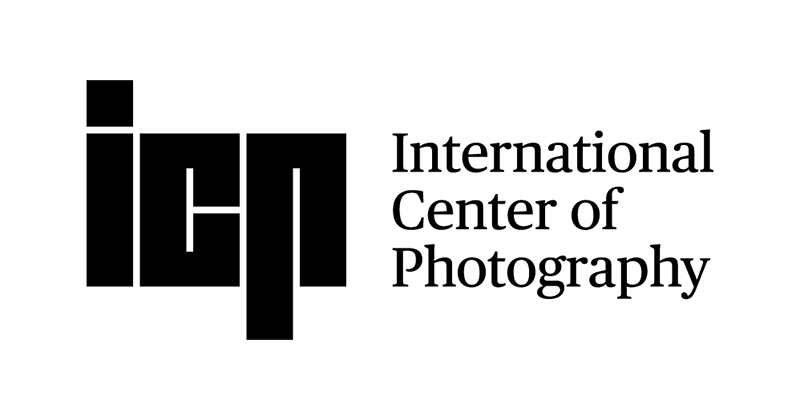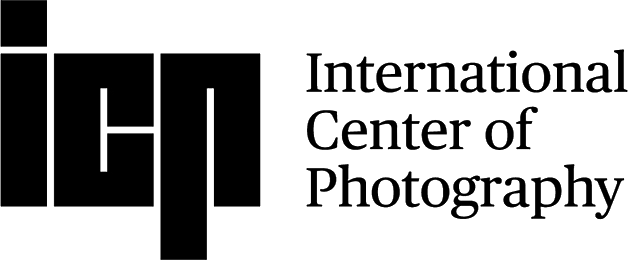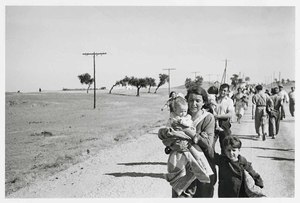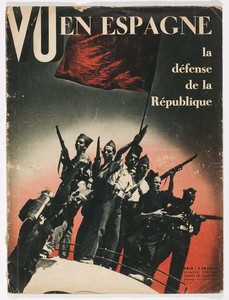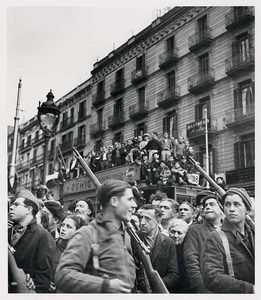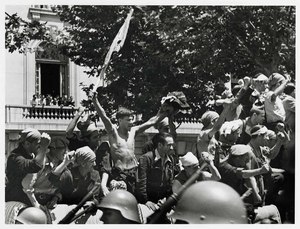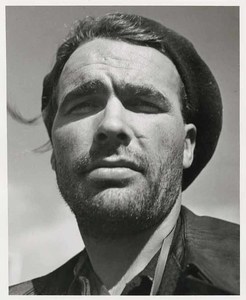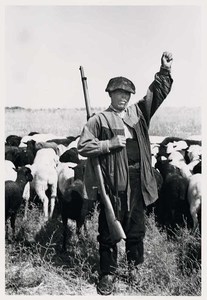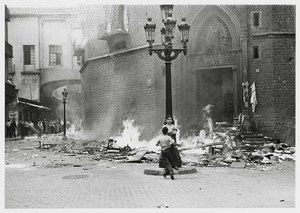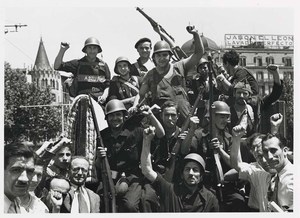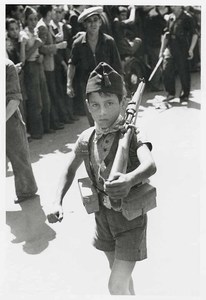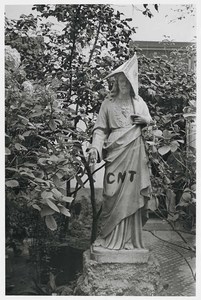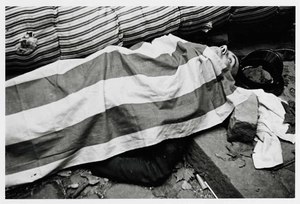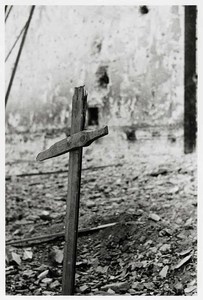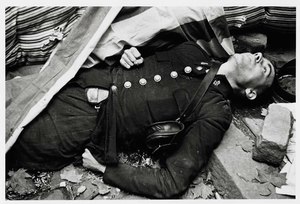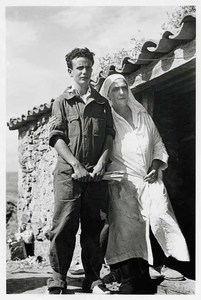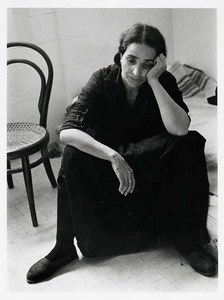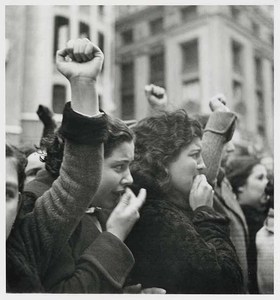Born in Essen, Hans Namuth produced his first major body of photographic work in Madrid during the Spanish Civil War, while he was working on assignment for Vu and LIFE. He studied photography later with Joseph Breitenbach in Paris, and with Alexey Brodovitch at the New School for Social Research after immigrating to New York in 1941. During World War II, Namuth worked for the French Foreign Legion and the U.S. Army Intelligence Service; afterwards he returned to freelance photography, publishing in LIFE, Look, Time, Newsweek, Harper's Bazaar, and Vogue. At the same time, he produced portraits of artists working in informal settings. His most famous of these is his series of Jackson Pollock; others among the more than two hundred artists are Willem de Kooning, Ad Reinhardt, Joseph Cornell, and Mark Rothko. Namuth's other major photographic series are Early American Tools, made in the 1970s and based on tools from the eighteenth century, and Guatemala: The Land, The People, a project begun in 1949 in which he periodically returned to a Guatemalan town to document its development.
In addition to his photography, Namuth made a number of films, on such artists and architects as Pollock, Josef Albers, Constantin Brancusi, Louis Kahn, and Alexander Calder. Viewed in combination with his still photographs, these attest to Namuth's deep involvement with portraiture. Among the honors he received for his film and photography are the Merit Award from the Film Council of Greater Boston and a U.S. Department of State Public Service Award.
Lisa Hostetler
Handy et al. Reflections in a Glass Eye: Works from the International Center of Photography Collection, New York: Bulfinch Press in association with the International Center of Photography, 1999, p. 223.
